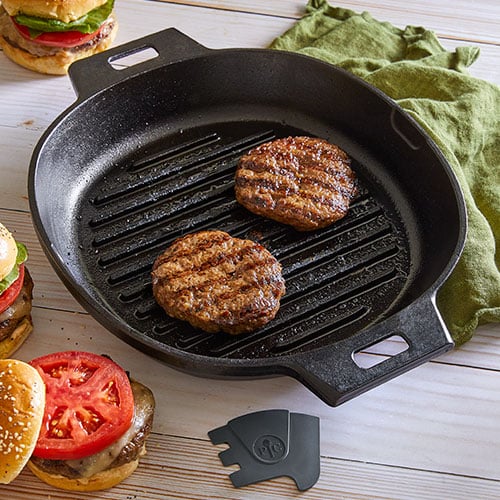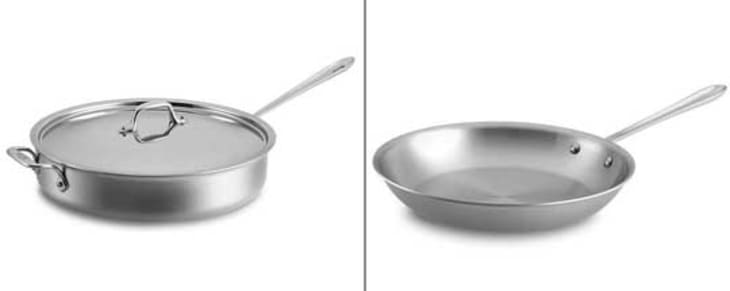The Ultimate Skillet Guide: Expert Insights for Exquisite Home Cooking
The Ultimate Skillet Guide: Expert Insights for Exquisite Home Cooking
Blog Article
Master the Art of Food Preparation With a Skillet: a Newbie's Guide
Master the Art of Cooking With a Skillet: a Novice's Guide is an extensive source for people anxious to improve their cooking skills utilizing a functional kitchen tool - the skillet. From picking the right frying pan to understanding essential techniques and heat control, this overview covers all the principles essential to come to be an experienced skillet cook.
Picking the Right Frying Pan
Selecting the best frying pan is crucial for understanding the art of food preparation with this functional kitchen area tool. With a lot of options available on the market, it can be overwhelming to make the appropriate selection. Nonetheless, comprehending the essential factors to take into consideration can streamline the decision-making process.
Cast iron skillets are understood for their exceptional heat retention and longevity, while stainless steel skillets use even warmth distribution and are simple to keep. Non-stick skillets are excellent for low-fat cooking and simple cleaning.
Size is one more critical element to take into consideration. Frying pans are available in numerous dimensions, usually gauged in inches. It is advised to choose a skillet that matches the dimension of your stovetop heater. A frying pan that is too small may cause congestion, while a skillet that is too big can cause irregular cooking.
Last but not least, handle design and warm resistance must likewise be taken right into account. A frying pan with a lengthy and comfy handle permits very easy ability to move and reduces the threat of burns. In addition, the handle ought to be heat-resistant to make sure risk-free handling throughout food preparation.
Vital Frying Pan Methods
To really master the art of food preparation with a skillet, it is essential to learn a variety of methods that will certainly raise your culinary skills to brand-new elevations. While the frying pan is a flexible and indispensable device in the kitchen, understanding and understanding these techniques will certainly enable you to produce a variety of delicious recipes easily.
One crucial technique is sautéing, which entails food preparation food swiftly in a percentage of warm oil or fat. This approach is best for cooking vegetables, meat, or seafood, as it aids to maintain their all-natural flavors and textures.
One more important strategy is searing, which involves food preparation food over high warm to create a browned and savory exterior. This is frequently made with meats, such as steak or chicken, to create a caramelized crust while maintaining the interior damp and tender.
Deglazing is also a valuable technique that includes including fluid, such as broth or white wine, to the skillet after food preparation meat - skillet guide. This assists to produce a tasty sauce by loosening up and including the browned bits adhered to the base of the skillet
Finally, stir-frying is a prominent strategy that involves swiftly cooking little pieces of food over high heat while regularly mixing. This technique is frequently utilized in Eastern cuisine and enables a savory and fast meal.

Understanding Warm Control
Grasping warmth control is crucial for attaining optimal outcomes when cooking with a frying pan. The ability to control the temperature level and adjust enables you to prepare various components to perfection. Recognizing warm control not just avoids your food from undercooking or shedding, however it also improves appearances and flavors.
To begin, it is important to preheat your frying pan properly. This step makes sure even warm circulation throughout the pan, allowing food to prepare evenly. When preheated, you can readjust the heat degree according to your recipe's requirements. Reduced warmth is excellent for delicate foods that call for mild cooking, such as fish or eggs. Greater warmth is suitable for scorching meats or accomplishing a crunchy crust on vegetables.
Readjusting the warm too regularly can influence the cooking process. If you see your food cooking as well rapidly, reduce the warmth somewhat.
Finally, bear in mind the warmth retention residential properties of your frying pan. Cast iron skillets, as an example, keep heat well and require reduced heat settings compared to stainless steel or non-stick frying pans. By recognizing your frying pan's warm conductivity, you can better regulate the cooking process and accomplish consistent outcomes.
Caring for Your Skillet
Proper upkeep is essential to maintaining the long life and efficiency of your skillet. Taking care of your frying pan includes a couple of easy yet vital steps that will certainly ensure it continues to be in superb condition for several years to find.

Second of all, it is recommended to period your frying pan routinely. Seasoning entails using a slim layer of oil to the skillet's surface area and heating it till it polymerizes, creating a natural non-stick finish. This procedure improves the frying pan's performance and stops food from sticking.
Additionally, keeping your frying pan correctly is necessary. To avoid harming the surface area or scratching, place a paper towel or cloth between each frying pan if you stack them. It is likewise suggested to keep your skillet in a dry location to avoid dampness and corrosion formation.
Lastly, keep in mind to occasionally examine your frying pan for any kind of indicators of wear or damage - skillet guide. If you discover any problems, resolve them without delay to avoid further damage.
Delicious Skillet Recipes
For those wanting to expand their culinary collection, the frying pan uses a variety of tasty dish alternatives. The versatility of this kitchen tool allows for a variety of food preparation methods, from browning and scorching to sautéing and simmering. Whether you choose meat, seafood, vegetables, or grains, there are countless skillet dishes that will certainly please even the most discerning taste.
One classic frying pan recipe is the seared steak. By pre-heating the frying pan and adding a touch of oil, you can attain Recommended Site a completely caramelized crust outside while keeping the meat tender and juicy on the inside. Match it with a side of sautéed veggies or a luscious mushroom sauce for a total and hearty meal.
If you're in the mood for seafood, a skillet dish like lemon garlic shrimp is both scrumptious and quick. With just look at this now a couple of basic components like fresh shrimp, minced garlic, lemon juice, and butter, you can produce a delicious dish that can be enjoyed by itself or served over pasta or rice.
For vegetarians, a skillet dish like ratatouille is a fantastic selection. This standard French dish features a medley of vivid vegetables such as eggplant, zucchini, bell peppers, and tomatoes, prepared together with flavors and natural herbs to produce a harmonious mix of flavors.
Verdict
In conclusion, understanding the art of cooking with a frying pan needs choosing the ideal skillet, discovering important techniques, understanding warm control, and looking after the skillet effectively. By complying with these actions, novices can come to be proficient in using a frying pan for various tasty dishes.
Master the Art of Cooking With a Skillet: a Novice's Overview is an extensive source for people anxious to enhance discover here their culinary abilities making use of a versatile kitchen area device - the frying pan. From choosing the best frying pan to understanding vital techniques and warm control, this overview covers all the fundamentals needed to come to be a proficient frying pan cook. Additionally, it offers useful understandings on correct skillet upkeep and provides a collection of tasty dishes that display the frying pan's possibility. Cast iron frying pans are recognized for their superb heat retention and longevity, while stainless steel frying pans supply even heat distribution and are simple to preserve. A frying pan that is also small may result in overcrowding, while a frying pan that is too huge can lead to unequal cooking.
Report this page